0 seconds of 0 secondsVolume 90%
Press shift question mark to access a list of keyboard shortcuts
Keyboard Shortcuts
Play/PauseSPACE
Increase Volume↑
Decrease Volume↓
Seek Forward→
Seek Backward←
Captions On/Offc
Fullscreen/Exit Fullscreenf
Mute/Unmutem
Seek %0-9
Live
00:00
00:00
00:00
Left upper: Peristaltic mixing conveyor. Left lower: Automatic switching system of motion mode according to contents condition. While the mixing prediction is unmixed, th...
Abstract:
The high frequency of rocket launches requires low-cost solid rocket fuel. Currently, the fuel manufacturing process faces increased launch costs caused by the risk of ig...Show MoreMetadata
Abstract:
The high frequency of rocket launches requires low-cost solid rocket fuel. Currently, the fuel manufacturing process faces increased launch costs caused by the risk of ignition from rotary mixers and increased equipment and labor costs from batch processes in which mixing and conveying are separated. Therefore, this paper proposes and verifies an automatic switching system between mixing and conveying modes for a peristaltic mixing conveyor that enables safe and continuous mixing and conveying of solid fuel. In a previous study, peristaltic mixing conveyor with low shear force was developed and successfully produced solid fuel. However, there was room for improvement for more efficient fuel production because the device was controlled by pre-determined driving pattern. The actual intestine generates movement autonomously by enteric nerves. Therefore, the development of a sensing function that imitates the enteric nervous system and generates movement patterns based on the acquired data is expected to improve manufacturing efficiency. In this study, the sensor data of a mixed solid fuel simulant packaged in a bag were acquired, and the degree of mixing (unmixed and mixed completely) was discriminated using supervised learning (the k-nearest neighbor method). Furthermore, a system was constructed to continue the mixing mode when unmixing and automatically switch the motion to the conveying mode when the mixing was complete. The experiment showed that the motion mode automatically switched to the conveying mode at almost the same time as the labeled training data, and mixing and conveying of the simulated material was successfully performed.
0 seconds of 0 secondsVolume 90%
Press shift question mark to access a list of keyboard shortcuts
Keyboard Shortcuts
Play/PauseSPACE
Increase Volume↑
Decrease Volume↓
Seek Forward→
Seek Backward←
Captions On/Offc
Fullscreen/Exit Fullscreenf
Mute/Unmutem
Seek %0-9
Live
00:00
00:00
00:00
Left upper: Peristaltic mixing conveyor. Left lower: Automatic switching system of motion mode according to contents condition. While the mixing prediction is unmixed, th...
Published in: IEEE Access ( Volume: 12)
Funding Agency:
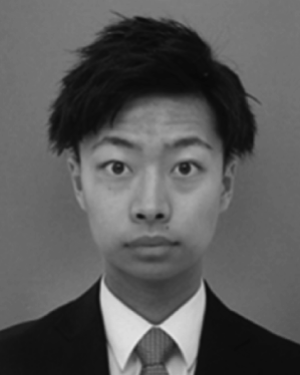
Department of Precision Mechanics, Faculty of Science and Engineering, Chuo University, Bunkyo-ku, Tokyo, Japan
Iori Terayama received the B.S. degree in precision mechanical engineering from Chuo University, Tokyo, Japan, in 2022, where he is currently pursuing the master’s degree.
His research interest includes the autonomous distributed control of peristaltic continuous mixing conveyor.
Iori Terayama received the B.S. degree in precision mechanical engineering from Chuo University, Tokyo, Japan, in 2022, where he is currently pursuing the master’s degree.
His research interest includes the autonomous distributed control of peristaltic continuous mixing conveyor.View more
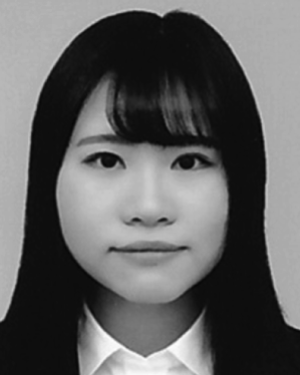
Department of Precision Mechanics, Faculty of Science and Engineering, Chuo University, Bunkyo-ku, Tokyo, Japan
Sana Oshino received the B.S. and M.S. degrees in precision mechanical engineering from Chuo University, Tokyo, Japan, in 2021 and 2023, respectively.
Her research interest includes the autonomous distributed control of peristaltic continuous mixing conveyor.
Sana Oshino received the B.S. and M.S. degrees in precision mechanical engineering from Chuo University, Tokyo, Japan, in 2021 and 2023, respectively.
Her research interest includes the autonomous distributed control of peristaltic continuous mixing conveyor.View more
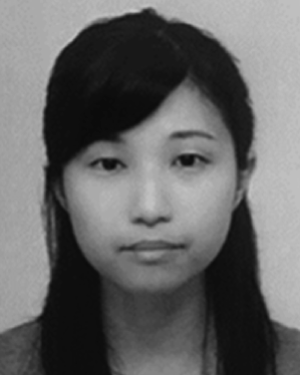
Research and Development Initiative, Chuo University, Bunkyo-ku, Tokyo, Japan
Rie Nishihama received the B.S., M.S., and Ph.D. degrees in engineering from Keio University, Japan, in 2007, 2009, and 2013, respectively.
From 2012 to 2017, she was an Engineer with the Technical Laboratory, Morita Holding corporation. She is currently an Institute Assistant Professor with Research and Development Initiative, Chuo University. Her research interests include ergonomic, biomechanics, and soft robotics. She ...Show More
Rie Nishihama received the B.S., M.S., and Ph.D. degrees in engineering from Keio University, Japan, in 2007, 2009, and 2013, respectively.
From 2012 to 2017, she was an Engineer with the Technical Laboratory, Morita Holding corporation. She is currently an Institute Assistant Professor with Research and Development Initiative, Chuo University. Her research interests include ergonomic, biomechanics, and soft robotics. She ...View more
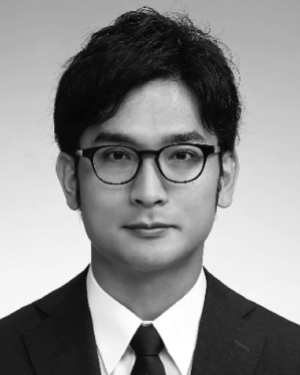
Research and Development Initiative, Chuo University, Bunkyo-ku, Tokyo, Japan
Manabu Okui received the B.S. and M.S. degrees in mechanical engineering from Tokyo Institute of Technology, Tokyo, Japan, in 2012 and 2014, respectively, and the Ph.D. degree from Chuo University, Tokyo, in 2018.
From 2014 to 2015, he was with Nissan Motor Company. From 2016 to 2018, he was a Research Assistant with the Research and Develop Initiative, Chuo University, where he has been a Research Associate, since 2019. H...Show More
Manabu Okui received the B.S. and M.S. degrees in mechanical engineering from Tokyo Institute of Technology, Tokyo, Japan, in 2012 and 2014, respectively, and the Ph.D. degree from Chuo University, Tokyo, in 2018.
From 2014 to 2015, he was with Nissan Motor Company. From 2016 to 2018, he was a Research Assistant with the Research and Develop Initiative, Chuo University, where he has been a Research Associate, since 2019. H...View more
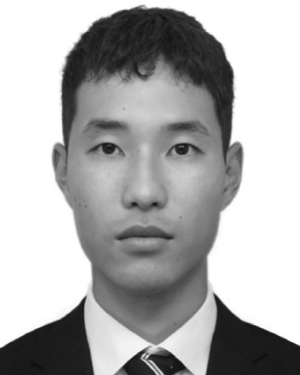
Department of Precision Mechanics, Faculty of Science and Engineering, Chuo University, Bunkyo-ku, Tokyo, Japan
Ryosuke Adachi received the B.S. degree in precision mechanical engineering from Chuo University, Tokyo, Japan, in 2023, where he is currently pursuing the master’s degree.
His research interest includes the autonomous distributed control of peristaltic continuous mixing conveyor.
Ryosuke Adachi received the B.S. degree in precision mechanical engineering from Chuo University, Tokyo, Japan, in 2023, where he is currently pursuing the master’s degree.
His research interest includes the autonomous distributed control of peristaltic continuous mixing conveyor.View more
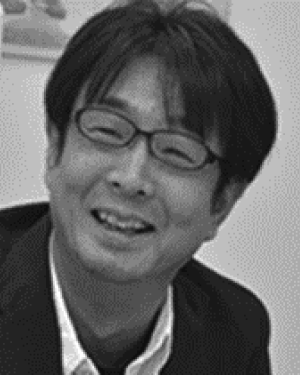
Department of Precision Mechanics, Faculty of Science and Engineering, Chuo University, Bunkyo-ku, Tokyo, Japan
Taro Nakamura (Member, IEEE) was born in 1975. He received the Ph.D. degree from Shinshu University, Nagano, Japan, in 2003.
From 1999 to 2003, he was a Research Associate with Akita Prefecture University. In 2004, he was a Lecturer with the Faculty of Science and Engineering, Chuo University, Tokyo, Japan, where he was an Associate Professor, from 2006 to 2013. Since 2013, he has been a Professor with Chuo University. Fro...Show More
Taro Nakamura (Member, IEEE) was born in 1975. He received the Ph.D. degree from Shinshu University, Nagano, Japan, in 2003.
From 1999 to 2003, he was a Research Associate with Akita Prefecture University. In 2004, he was a Lecturer with the Faculty of Science and Engineering, Chuo University, Tokyo, Japan, where he was an Associate Professor, from 2006 to 2013. Since 2013, he has been a Professor with Chuo University. Fro...View more

Department of Precision Mechanics, Faculty of Science and Engineering, Chuo University, Bunkyo-ku, Tokyo, Japan
Iori Terayama received the B.S. degree in precision mechanical engineering from Chuo University, Tokyo, Japan, in 2022, where he is currently pursuing the master’s degree.
His research interest includes the autonomous distributed control of peristaltic continuous mixing conveyor.
Iori Terayama received the B.S. degree in precision mechanical engineering from Chuo University, Tokyo, Japan, in 2022, where he is currently pursuing the master’s degree.
His research interest includes the autonomous distributed control of peristaltic continuous mixing conveyor.View more

Department of Precision Mechanics, Faculty of Science and Engineering, Chuo University, Bunkyo-ku, Tokyo, Japan
Sana Oshino received the B.S. and M.S. degrees in precision mechanical engineering from Chuo University, Tokyo, Japan, in 2021 and 2023, respectively.
Her research interest includes the autonomous distributed control of peristaltic continuous mixing conveyor.
Sana Oshino received the B.S. and M.S. degrees in precision mechanical engineering from Chuo University, Tokyo, Japan, in 2021 and 2023, respectively.
Her research interest includes the autonomous distributed control of peristaltic continuous mixing conveyor.View more

Research and Development Initiative, Chuo University, Bunkyo-ku, Tokyo, Japan
Rie Nishihama received the B.S., M.S., and Ph.D. degrees in engineering from Keio University, Japan, in 2007, 2009, and 2013, respectively.
From 2012 to 2017, she was an Engineer with the Technical Laboratory, Morita Holding corporation. She is currently an Institute Assistant Professor with Research and Development Initiative, Chuo University. Her research interests include ergonomic, biomechanics, and soft robotics. She is a member of the JSME.
Rie Nishihama received the B.S., M.S., and Ph.D. degrees in engineering from Keio University, Japan, in 2007, 2009, and 2013, respectively.
From 2012 to 2017, she was an Engineer with the Technical Laboratory, Morita Holding corporation. She is currently an Institute Assistant Professor with Research and Development Initiative, Chuo University. Her research interests include ergonomic, biomechanics, and soft robotics. She is a member of the JSME.View more

Research and Development Initiative, Chuo University, Bunkyo-ku, Tokyo, Japan
Manabu Okui received the B.S. and M.S. degrees in mechanical engineering from Tokyo Institute of Technology, Tokyo, Japan, in 2012 and 2014, respectively, and the Ph.D. degree from Chuo University, Tokyo, in 2018.
From 2014 to 2015, he was with Nissan Motor Company. From 2016 to 2018, he was a Research Assistant with the Research and Develop Initiative, Chuo University, where he has been a Research Associate, since 2019. His research interests include soft-robotics and control, such as an artificial muscle and functional fluid.
Manabu Okui received the B.S. and M.S. degrees in mechanical engineering from Tokyo Institute of Technology, Tokyo, Japan, in 2012 and 2014, respectively, and the Ph.D. degree from Chuo University, Tokyo, in 2018.
From 2014 to 2015, he was with Nissan Motor Company. From 2016 to 2018, he was a Research Assistant with the Research and Develop Initiative, Chuo University, where he has been a Research Associate, since 2019. His research interests include soft-robotics and control, such as an artificial muscle and functional fluid.View more

Department of Precision Mechanics, Faculty of Science and Engineering, Chuo University, Bunkyo-ku, Tokyo, Japan
Ryosuke Adachi received the B.S. degree in precision mechanical engineering from Chuo University, Tokyo, Japan, in 2023, where he is currently pursuing the master’s degree.
His research interest includes the autonomous distributed control of peristaltic continuous mixing conveyor.
Ryosuke Adachi received the B.S. degree in precision mechanical engineering from Chuo University, Tokyo, Japan, in 2023, where he is currently pursuing the master’s degree.
His research interest includes the autonomous distributed control of peristaltic continuous mixing conveyor.View more

Department of Precision Mechanics, Faculty of Science and Engineering, Chuo University, Bunkyo-ku, Tokyo, Japan
Taro Nakamura (Member, IEEE) was born in 1975. He received the Ph.D. degree from Shinshu University, Nagano, Japan, in 2003.
From 1999 to 2003, he was a Research Associate with Akita Prefecture University. In 2004, he was a Lecturer with the Faculty of Science and Engineering, Chuo University, Tokyo, Japan, where he was an Associate Professor, from 2006 to 2013. Since 2013, he has been a Professor with Chuo University. From 2012 to 2013, he was a Visiting Professor with the Swiss Federal Institute of Technology Lausanne (EPFL), Lausanne, Switzerland. He founded Solaris Inc., as a start up company. His research interests include soft robotics, such as an artificial muscle, functional fluid, and the development and applications of biorobotics.
Taro Nakamura (Member, IEEE) was born in 1975. He received the Ph.D. degree from Shinshu University, Nagano, Japan, in 2003.
From 1999 to 2003, he was a Research Associate with Akita Prefecture University. In 2004, he was a Lecturer with the Faculty of Science and Engineering, Chuo University, Tokyo, Japan, where he was an Associate Professor, from 2006 to 2013. Since 2013, he has been a Professor with Chuo University. From 2012 to 2013, he was a Visiting Professor with the Swiss Federal Institute of Technology Lausanne (EPFL), Lausanne, Switzerland. He founded Solaris Inc., as a start up company. His research interests include soft robotics, such as an artificial muscle, functional fluid, and the development and applications of biorobotics.View more

